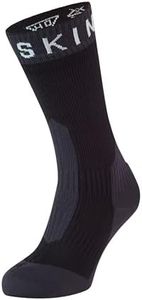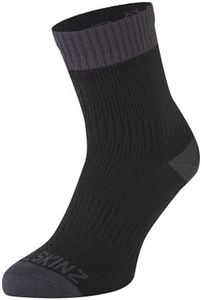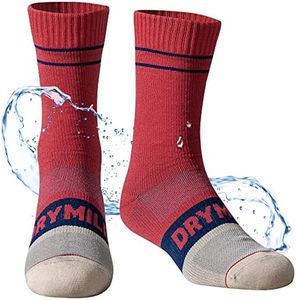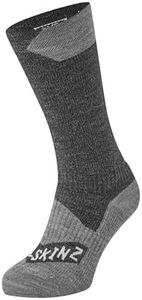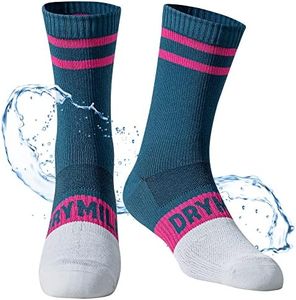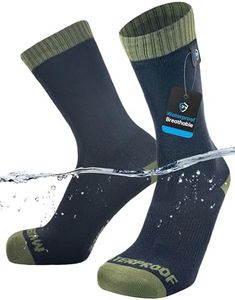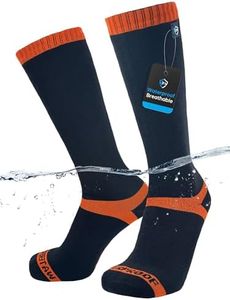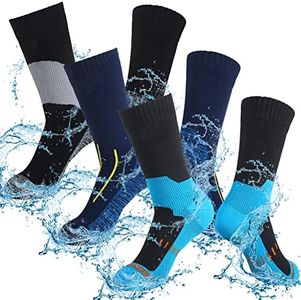We Use CookiesWe use cookies to enhance the security, performance,
functionality and for analytical and promotional activities. By continuing to browse this site you
are agreeing to our privacy policy
10 Best Waterproof Socks For Hiking
From leading brands and best sellers available on the web.Buying Guide for the Best Waterproof Socks For Hiking
Choosing the right waterproof socks for hiking can make your outdoor experience much more comfortable, especially in wet or unpredictable weather. The goal is to keep your feet dry, warm, and free from blisters while ensuring that you don’t sacrifice breathability or comfort. When picking waterproof socks, think about where and when you plan to hike, the kind of shoes you’ll wear them with, and how sensitive your feet are to temperature and friction. Let your usual hiking conditions and your personal preferences lead your choices.Waterproof MembraneThe waterproof membrane is the middle layer in waterproof socks and is what actually keeps water out. This layer is important because it acts as a shield between your feet and external moisture like rain, puddles, or river crossings. Not all membranes are created equal—some are more breathable but less waterproof, while others might keep water out but let your feet sweat. For short, light hikes in mild wet conditions, a lighter membrane may be enough. For prolonged hikes in very wet conditions, look for a membrane that prioritizes full waterproofing, even if breathability is slightly reduced.
BreathabilityBreathability refers to how well the socks let moisture from sweat escape. This is crucial because even if water doesn’t get in, sweat that’s trapped inside can make your feet damp and uncomfortable. Socks with a higher breathability rating will keep your feet feeling dry from the inside, which is especially important for long hikes or warm conditions. If you tend to sweat a lot or hike in warm weather, lean toward socks labeled as highly breathable, carefully balancing this with how much waterproofing you need.
Thickness and InsulationThickness and insulation describe how warm and cushioned the socks are. Thicker socks offer more padding and warmth, which is ideal for cold weather hiking or rough terrains. Thinner socks are less warm but better for moderate or hot climates where overheating can be an issue. Consider the temperatures you'll be hiking in: for cold, wet hikes, pick thicker, insulated socks; for temperate or hot weather, go for thinner, lighter socks.
Material BlendThe material blend usually involves a combination of synthetic fibers (like nylon or polyester) for durability and quick-drying, with natural fibers (like merino wool) for warmth, softness, and odor resistance. The right mix affects how the sock feels on your skin, how quickly it dries, and how well it manages odor. If you have sensitive skin or care about odor, look for socks with more natural fibers. For tough terrain and heavy use, lean toward higher synthetic content for durability.
Fit and LengthFit and length determine how the socks stay in place and how much protection they provide. A good fit prevents blisters and slippage inside the boot, while the right length (ankle, crew, knee-high) protects against water, debris, and abrasion from boots or tall grasses. For hikes in deep water or muddy conditions, longer socks are more protective. For casual walks or dry conditions, shorter options may be comfortable and adequate. Always ensure the socks aren’t too tight or loose, matching them to your shoe type and intended hiking environment.
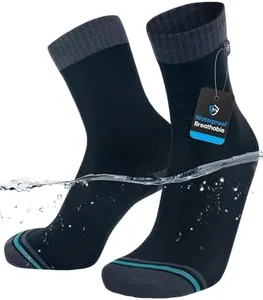
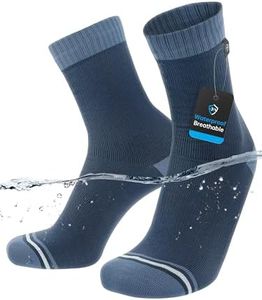


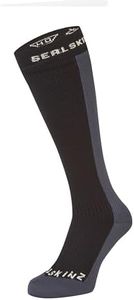
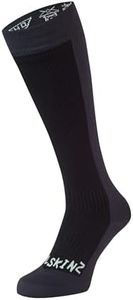
![The Wudhu Socks - Non-Leather, 100% Waterproof, Breathable, and Anti-Odor Socks for Ablution & Outdoor Activities [Jet Black][Unisex] (Medium, Black)](https://images-proxy.bestreviews.guide/5gPpZEhZ-yyXxSZ3h_88OpZ3haA=/0x300/https://m.media-amazon.com/images/I/41DME8y+EXL._AC_CX679_.jpg)
